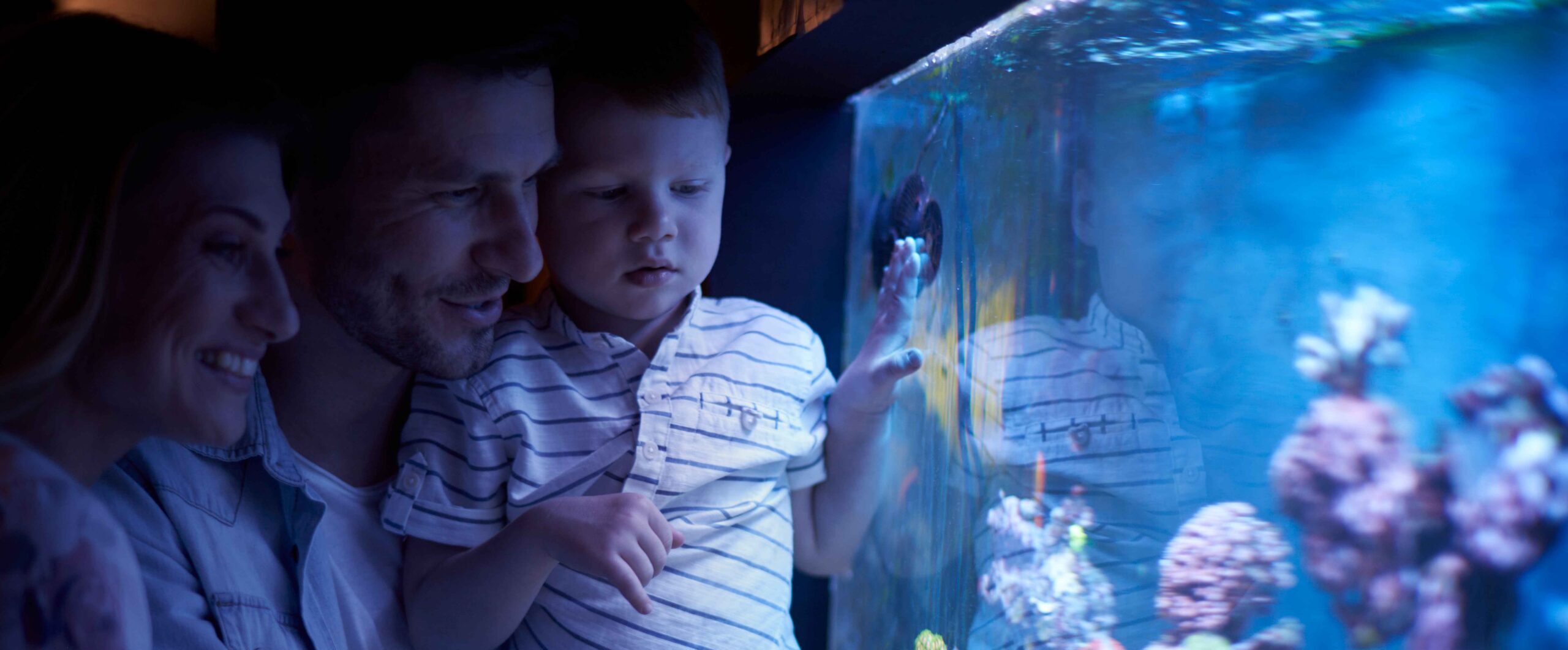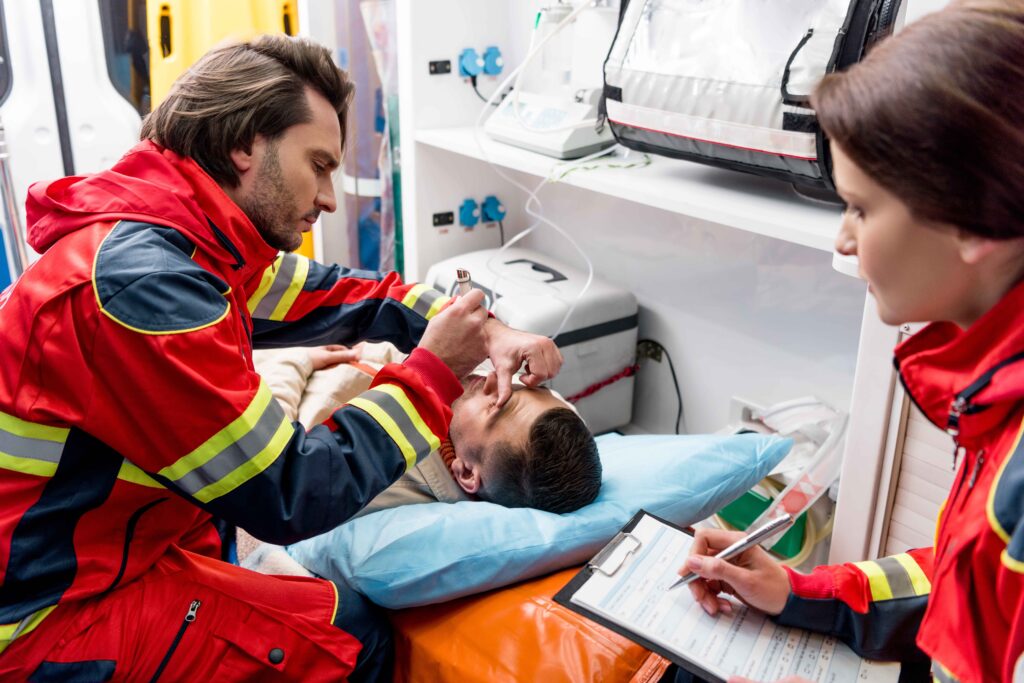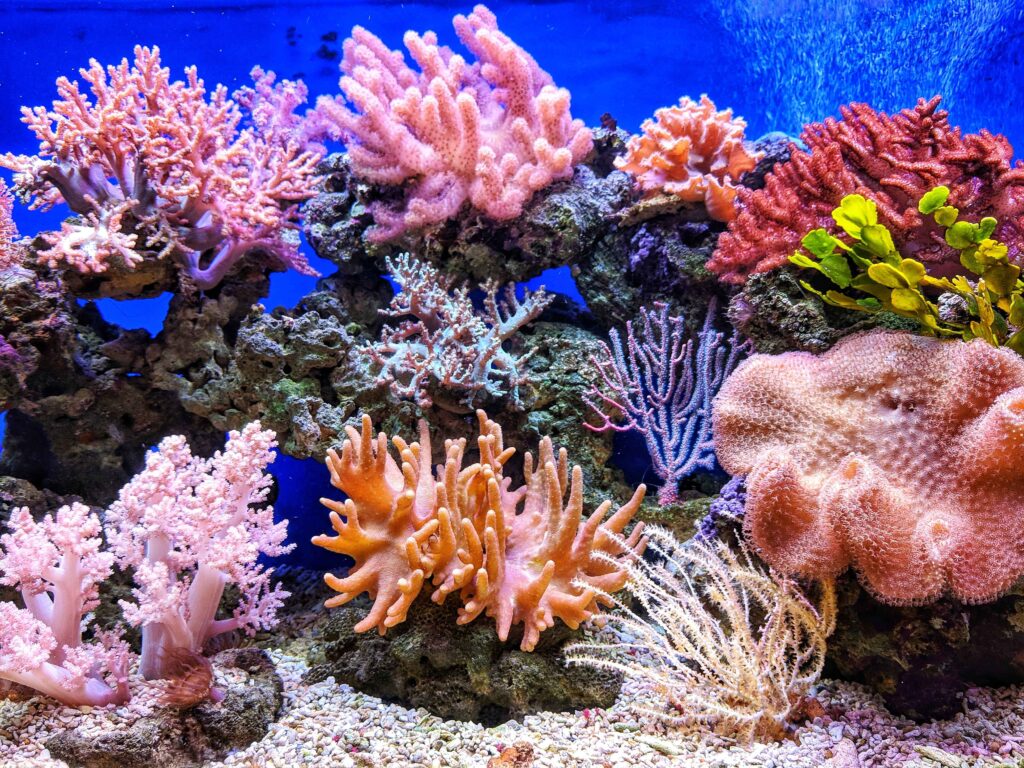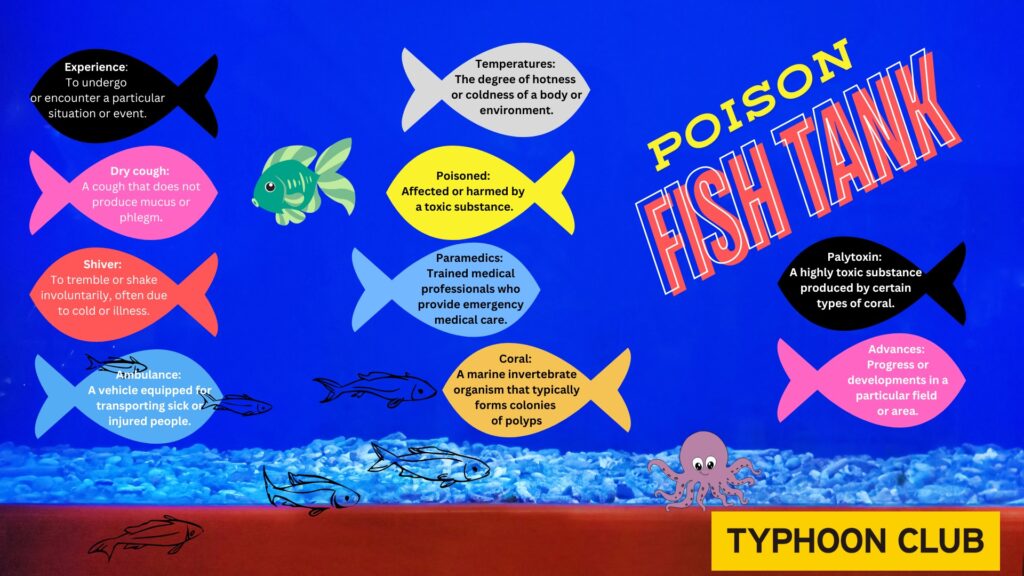
Mark and Katie Stevenson’s three children liked to keep fish at their home. They were fun to watch, and sometimes more fun than the TV. The family was upset when they returned home from a short holiday to discover that all the fish had died. Once the children had gone to bed, Mark and Katie began to clean up the fish tank. They emptied the water and scrubbed it clean.
Ten minutes later, the two adults began to experience a dry cough. It quickly got worse, and they began to shiver, even though they were not cold. Instead of going to bed, they called for an ambulance and were taken to hospital. Their temperatures had reached 42 degrees Celsius. They explained to the doctor what they had been doing before the dry cough began. The doctor called the police!

Paramedics returned to the home dressed in protective suits. The entrance to the house was roped off. The children, now feeling unwell themselves, were all taken to hospital. The whole family had been poisoned.
Inside the fish tank were pieces of coral. They had been bought from a local pet shop about one year earlier. It had been kept underwater in the fish tank ever since. Nobody had told the Stevensons that some coral can produce a poison called Palytoxin. When exposed to the air, the coral can release the poison – it’s one of the strongest known to man. Had Mark and Katie decided to sleep instead of calling for the ambulance, the whole family would have died.

Until recently, not many amateur fish tank owners kept coral. It’s difficult to look after. However, with the recent advances in technology, it has become easier to manage coral in home fish tanks. With this improvement, there have been more reported cases of Palytoxin poisoning. In the past 14 years, there have been more than 170 cases reported in the USA.

When the family recovered one week later, Katie Stevenson was asked about the coral. She said, “When we bought it, we really knew nothing about it. We were not given any leaflets which explained the dangers of keeping this type of coral. We were told nothing.”
The coral in the Stevenson’s fish tank is often called Button Polyp coral. It sounds attractive, but it can kill you. If you have coral in your own fish tank, you may wish to check out what kind of coral it is. Please remember not to touch it under any circumstances. Who would have thought that keeping a simple fish tank in your home could lead to a possible early death?
Question:

VIDEO: The poisonous coral experience
VOCABULARY
